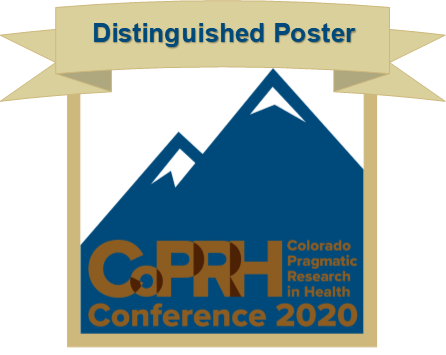Join us as this presenter discusses this poster live on Tuesday, August 11, 2020 | Track D at 5:35 PM Mountain

PRESENTER
ANGELA KENISTON, MSPH
Director, Data and Analytics/Instructor, University of Colorado
Director, Data and Analytics/Instructor, University of Colorado
BACKGROUND
Typical solutions for improving discharge planning often rely on one-way communication mechanisms and static data entry into the eHR. We have designed a discharge readiness tool that has been integrated into the electronic health record (eHR), which allows providers to communicate the status of patient discharge readiness in real-time to all clinical staff providing care. This information will enhance prioritization of care and patient flow. Stakeholder engagement to inform user-centered design was imperative to ensure our discharge readiness tool is successfully integrated into existing workflows such that all clinical staff will this tool with every patient.
SETTING
To engage hospitalists, nurses, other clinical staff, patients, families and caregivers, and hospital leadership, we met with different stakeholder groups across the inpatient setting to obtain feedback about tool design and functionality.
METHODS
We employed multiple user-centered design strategies, including exploring current functionality for documenting discharge readiness and directing discharge planning, iterative low-fidelity mock-ups, multi-disciplinary stakeholder meetings, Brainwriting Premortem exercise, and pre-production user testing (Figure 1). Utilization and feedback were evaluated using EHR and survey data.
RESULTS
We found most providers who responded to the survey reported that the tool either saved time or did not change the amount time required to complete their discharge workflow (21, 87.5%). During the pilot phase, 352 care team members, including hospitalists, residents, nurses, care managers, and physician therapists, have added the tool to their workflow. At the conclusion of the post-implementation phase, 467 care team members have added the tool to their workflow. In addition, providers assigned a discharge status to 84.9% of patients discharged during the pilot implementation period and 87.4% of patients discharged post-implementation. The most common barriers identified by providers were medical improvement (40.9%), placement (12.3%), subspecialty consults (9.6%), physical therapy (9.3%), and social work or care management (8.9%).
CONCLUSIONS
Typical solutions for improving discharge planning often rely on one-way communication mechanisms and static data entry into the EHR or in-person meetings for discharge rounds. We have designed a dynamic EHR discharge readiness tool, allowing the care team to communicate the status of patient discharge readiness and patient discharge needs in real-time across hospital settings. Survey and EHR data suggest that this electronic discharge readiness tool has been successfully adopted by providers and clinical staff. Frequent stakeholder engagement and iterative user-centered design was critical to the successful implementation of this tool.
POSTER
VIDEO
